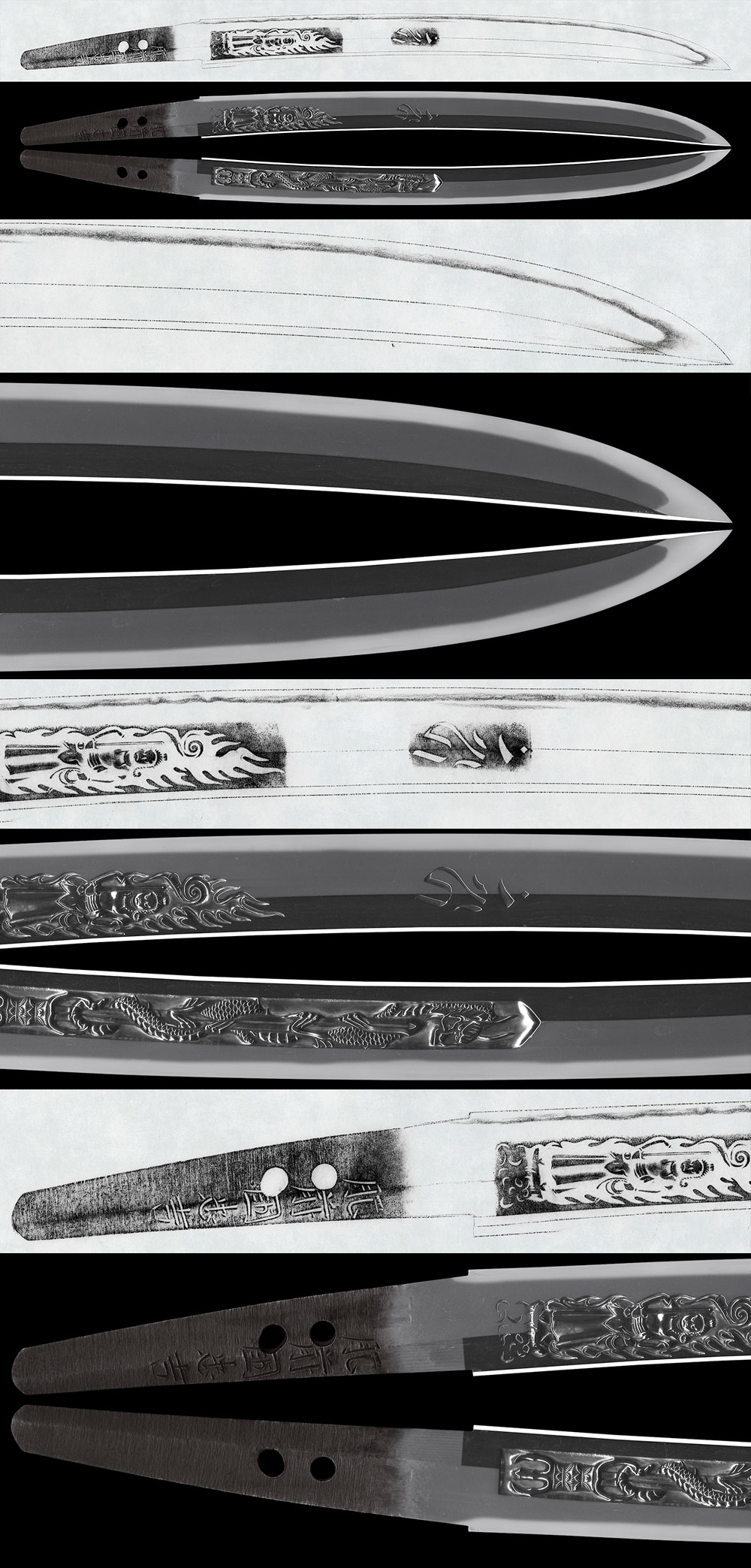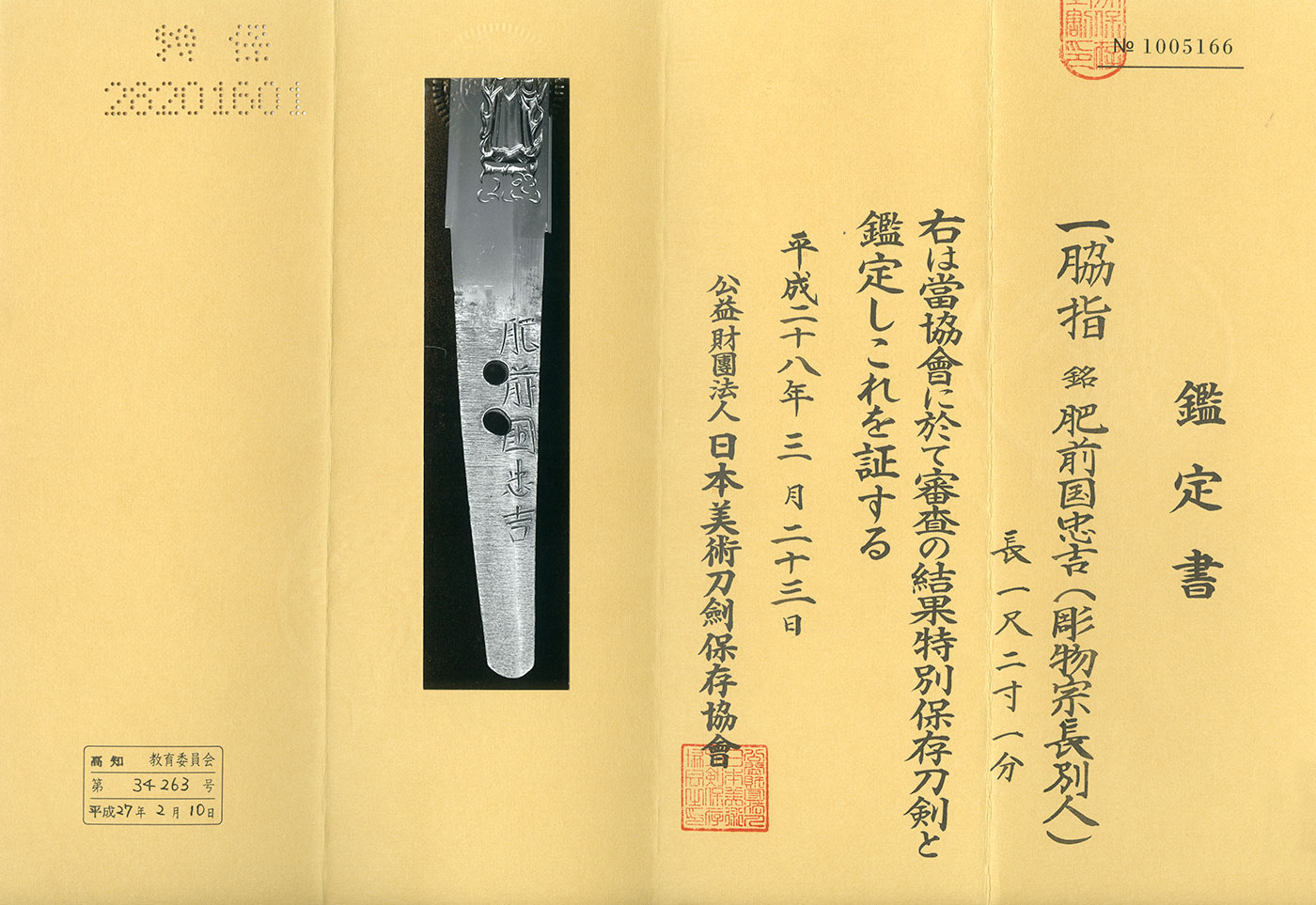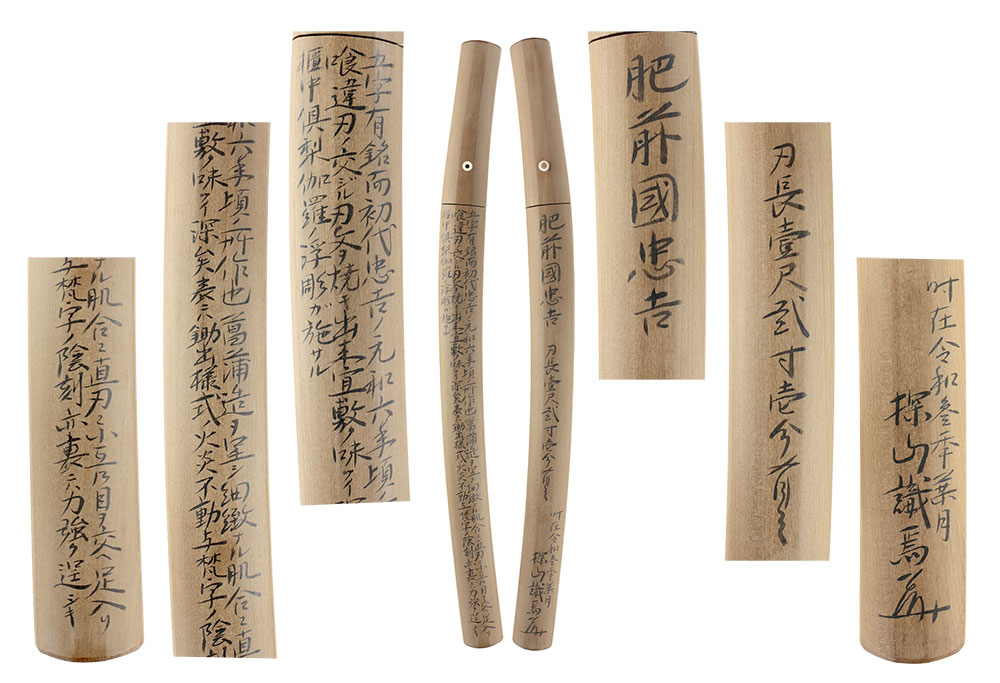Bid History
Auction has expired
Highest bidder was : MURAMASA
|
MURAMASA
2025/08/31 (Sun) 10:03 |
¥2,500,000 |
|
Auction started
2025/08/24 (Sun) 12:24 |
|
※ = Auto
Wakizashi: in Shirasaya, with Koshirae (NBTHK Tokubetsu Hozon Token)
Signature: Hizen no Kuni Tadayoshi 肥前国忠吉(1st Generation)
Sayagaki:
Hizen Koku Tadayoshi
This sword bears a five-character signature and is attributed to the first-generation Tadayoshi, dating to around Genna 6 (1620). It has a shōbu-zukuri shape, with a finely detailed grain pattern (hada). The hamon consists mainly of a straight temper (suguha), mixed with small gunome patterns, featuring Ashi and Kuichigai-ba(intersecting irregular lines), showing an excellent workmanship and profound elegance. On the omote side, there is an engraved image of the Flaming Fudō Myōō and Sanskrit characters in the sukidashi style, while on the ura side, a boldly carved and powerful Kurikara dragon in relief is depicted.
written by Tanzan in August, 2021.
(We divide 4 sections for each sword as Saijyo Saku, Jyojyo Saku, Jyo Saku and Regular Saku.)
This work is ranked as Saijo Saku among the works of Hizen no Kuni Tadayoshi.
Habaki: silver base engraved with a design of waves.
Blade Length: 36.7 cm (14.4 in)
Curvature: 1.0 cm (0.4 in)
Mekugi Holes: 2
Width at Base (Motohaba): 2.93 cm (1.2 in)
Thickness (Kasane): 0.60 cm (0.2 in)
Sword Weight: 370 g
Era: Early Edo period, early 17th century
Shape: slightly wide Shobu-zukuri Wakizashi with carvings.
Jigane: fine Koitame hada
Hamon: Ko-nie deki, suguha with thich nioikuchi.
Features:
Saijo O-wazamono: Saijo Saku: Hizen.
The first-generation Hizen no Kuni Tadayoshi is renowned as one of the foremost swordsmiths of the Hizen school. He is also celebrated for the exceptional sharpness of his blades, earning the designation of ō-wazamono (great cutting ability).
Tadayoshi was born in 1572 in Saga and traveled once to Kyoto, where he studied under Umetada Myōjū. After returning to Saga, he served as an official swordsmith for the Saga Domain. He used several different signatures, including “Hizen no Kuni Jūnin Tadayoshi Saku,” “Hizen no Kuni Musashi Daijō Tadahiro,” and “Hizen no Kuni Jū Fujiwara Tadahiro.”
He worked with a several professional carvers, and cavings by Munenaga, Yoshiinaga and Myoju are known on his works.
Koshirae:
Tsuba: dragon-carved Tsuba
Fuchikashira: Shakudo base carved with autumn insects and flowers inscription: Mino Ju Mitsuoki
Saya: ray skin
Menuki: a design of Inro(a small case)
NBTHK Tokubetsu Hozon Token Certificate
Aoi Art estimation paper: Whole Oshigata







Winning Bid: ¥2,500,000
Auction has expired
Highest bidder was : MURAMASA
|
MURAMASA
2025/08/31 (Sun) 10:03 |
¥2,500,000 |
|
Auction started
2025/08/24 (Sun) 12:24 |
|
※ = Auto